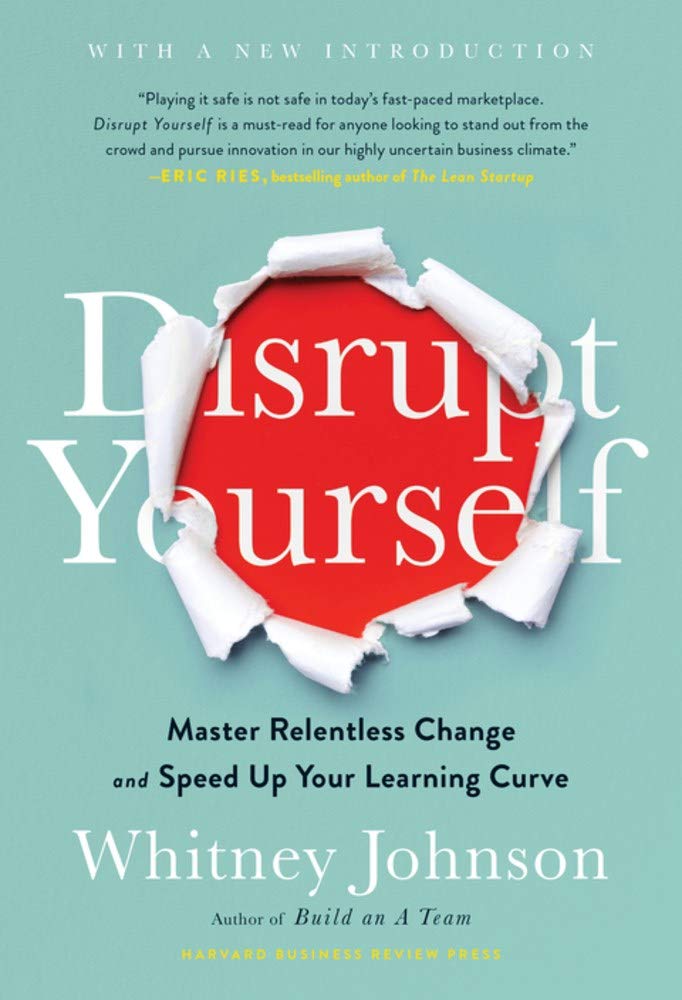A Prudent Project


Exploring the application of Whitney Johnson's four principles of self-disruption in addressing unconscious bias within auto sales
About the book
Whitney Johnson’s "Disrupt Yourself" is a vibrant and compelling narrative delving into personal disruption's transformative power.
This book was a required reading for a past leadership event I attended. This book became like a bible to me afterward.
It draws upon the revolutionary concept of disruptive innovation, traditionally applied to companies and technologies, to propose an exhilarating approach to individual careers and growth. Through the lens of various individuals who have courageously veered off conventional career paths to embrace the unknown, the book illuminates how adopting disruptive strategies can lead to unprecedented personal and professional fulfillment.
At the heart of this journey are the "Four Principles of Self-Disruption," aptly explained by Harvard Business Review – principles that offer a blueprint for those daring enough to redefine their destiny, namely;
Target a Need that Can Be Met More Effectively: Just like companies identify unaddressed market needs, individuals should seek roles where their unique skills can address unmet needs. Consider Salesforce.com, which transformed the CRM landscape with its cloud-based solution initially aimed at small and medium-sized businesses. Similarly, individuals like Martin Crampton, who realized his marketing acumen was his ticket to impactful roles, or Heather Coughlin, who transitioned from equity sales to a niche offering in investment research, showcase how aligning personal strengths with unmet needs can lead to disruptive success.
Identify Your Disruptive Strengths: Understanding and leveraging your unique strengths that set you apart from the crowd is crucial. It's about recognizing what you do exceptionally well that others cannot easily replicate. Adam Richardson found his disruptive strength in merging design with deep customer insights, a niche skill in the 90s. By focusing on their distinctive abilities, disruptors carve out new paths and opportunities that match their strengths.
Step Back (or Sideways) to Grow: Progress isn’t always a straight line upward. Sometimes, stepping back or moving sideways can offer the most significant growth opportunities, putting you on a new trajectory that better aligns with your disruptive strengths and goals. Dave Blakely’s move from software engineering to project management at IDEO exemplifies this, allowing him to significantly broaden his skills and influence.
Let Your Strategy Emerge: Embrace flexibility and adaptability in your career path. Disruptive innovators understand that not all journeys are linear or predictable. They take calculated risks, adjust based on feedback, and are open to pivoting their strategy. This emergent approach allows for unexpected opportunities and paths that might not have been initially considered, much like Netflix's pivot from DVD rentals to streaming.
The challenges of self-disruption are as daunting as they are exhilarating. It demands a willingness to leave comfort zones, face the uncertainty of uncharted paths, and sometimes endure short-term setbacks for long-term gains. It requires resilience to withstand skepticism and the persistence to persevere through failures and doubts.
Through the stories of Liz Brown, Alex McClung, Heather Coughlin, and many others, "Disrupt Yourself" doesn't just advocate for a radical rethinking of career development; it provides a compelling case study of the extraordinary rewards that await those who do. It is a testament to the power of personal innovation, underscoring that the most overlooked engine of economic and personal growth is, indeed, oneself.
Disrupt Yourself by Whitney Johnson (CEO of Disruption Advisors).
Published by Harvard Business Review Press (November 12, 2019)


